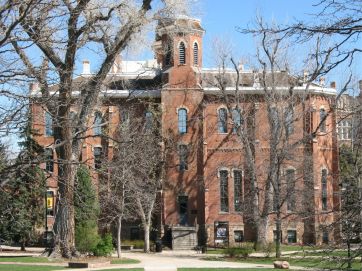Prison is always an education. One of the great prison memoires of an earlier era, Bill Sands’ My Shadow Ran Fast, gave us the Bildungsroman of a street thug taken under the wing of San Quentin’s legendary Warden Duffy in the 1940s. But truth be told, graduates of San Quentin generally learned more about how to shape better lockpicks than how to pick apart John Locke.
We have nothing against gaining good vocational skills, but the idea of reaching some prisoners through liberal education is appealing, and we’re pleased that in at least a few “houses of correction” in the
What does it mean to give inmates entre to the classics? Dumas offers one literary answer. In The Count of Monte Cristo, Edmond Dantes, unlucky in love, unjustly imprisoned, and inconveniently uneducated, has a stroke of good fortune. An imprisoned priest of the ancien régime with a dubious sense of direction tunnels into Dantes’ cell and promptly teaches him to read. Before long Dantes has mastered the humanities, sciences, languages, etiquette, and martial arts.
Most of the then 350 prison education programs in the
The disappearance of Pell Grants drove away many of the community colleges and universities that ran prison education, but a few hardy programs found alternate funding, and a couple of new programs sprang up, prompted by earnest belief in the humane ideal of higher education rather than the prospect of a market opportunity.
At San Quentin, a medium-security prison in the California Bay Area, the Prison University Project was established as a non-profit in 1996. Since
In
Boston University's Prison Education Program serves four prisons. Not only does BU cover all the expenses, but it also issues degrees in its name; a dedicated prisoner could earn a B.A. from BU, all while incarcerated. Before Pell Grants were revoked, BU even offered graduate school—awarding a total of 39 Master’s degrees.
Lest this sound like the best-kept secret of undergraduate admissions, note the years it takes to complete a degree. After one has committed a crime (please don’t), a prisoner has to demonstrate his dedication to the program through a history of good behavior in prison and commitment to applying themselves. Before taking college classes, he must work towards a GED if he doesn’t already have a high school diploma. Next comes basic college prep classes in math (up to Algebra) and writing. Many of the inmates are reading at the 7th grade level, and others have difficulty even forming a sentence. Finally, an inmate can take college classes. But prison life doesn’t lend itself to being a full-time student, so 1 or 2 classes a semester is standard. Students also work full time in the prison, earning $25 a month at San Quentin, regardless of education.
The perennially debated issues in prison education are whether it contributes to rehabilitation or just to better-educated criminals; and whether prisoners are better served with vocational training or with something more intellectual. There is a clear cut answer to one of these. Prisoners who received degrees while in prison very seldom go back to their alma mater: four times less likely. The vocational vs. liberal arts issue is more complicated. The obvious benefit of vocational training is that the inmate graduates with practical know-how, making it easier to find a job, support a family, and acclimate to the outside world. Easier, of course, doesn’t mean easy. “Reentry” for most ex-felons remains very difficult and no amount of vocational training will overcome the deep distrust with which society regards the individual who once served hard time.
That suggests a utilitarian case for liberal education, which aims not just to furnish the inmate with knowledge and skills but to open his mind to civilizing ideas. Certainly, there is no guarantee that a close reading of Crime and Punishment will deter a would-be killer or that mastering The Tempest will conquer the impulse to revenge. A liberal education doesn’t automatically confer self-restraint, regard for others, or a temperate view of humanity. But it helps.
The real case for liberal education in prisons, however, doesn’t rest on preparing students for life on the outside. It rests instead on the idea of helping other people to civilize themselves, regardless of whether they will ever be paroled. The Salt Lake Tribune introduces a Department of Corrections inmate reflecting on what his jailhouse degree means:
‘It's big accomplishment,’ said Rainford, behind bars for kidnapping, sexual assault and attempted murder. ‘It's been something that has given me knowledge, and knowledge gives me freedom and they can't take that away.’ Rainford said he would like to pursue a job in design engineering. He becomes eligible for parole in 2029.
Perhaps we don’t want to meet Mr. Rainford on the outside any time sooner, but there is something heartening about his sense of freedom right where he is. Richard Lovelace’s love lyric “Stone walls do not a prison make / Nor iron bars a cage” approximates the feeling. Inmates in liberal arts programs frequently invoke the language of inner freedom to describe their experience. The irony, of course, is that so many students who are on the outside attending elite four-year colleges and universities adopt the pretence that their freedom is phony and that they are victims of an oppressive society.
How liberating is a liberal arts education really? Of course, it depends on what we mean by the liberal arts. At San Quentin, the Associate of Arts common core classes include Intro to Composition, Intro to Literature, Algebra, Science, Ethics, Logic, and History, with a few choices among science and history courses. BU’s prison program offers traditional humanities courses (like those offered at San Quentin); its off-beat Latin program; but also a series of sociology courses—Gender, Race, and Class; Social Justice and Composition; Deviance; Stratification; and Social Problems—that sound like drearily familiar examples of campus political correctness.
So how liberating? We don’t know. The anti-liberal arts aimed at debunking Western civilization and supplanting it with identity group politics don’t seem very liberating at all, yet this strain of contemporary academe has infected at least one of the remaining prison liberal arts programs.
Let’s take a step back and a step forward. Clever and talented people sometimes turn out to be appalling human beings. Jack Henry Abbott, the murderer sprung from prison largely on the basis of Norman Mailer’s praise of his writing, promptly killed again—stabbing an innocent waiter at a restaurant. The serial killer Ted Bundy defended himself at trial with intellectual aplomb. We don’t want to mix-up the capacities to reason, to speak persuasively, and to write eloquently with the qualities of good character. Some people absorb only the veneer of education and remain rotten at the core.
But education does liberate some. Bill Sands. Rainford (the kidnapper, sexual assaulter, and tried-but-failed murderer). For a few the liberal arts are the locus poenitentiae. That seems an ideal worth pursuing—wherever our term. Education, after all, is always a prison.













